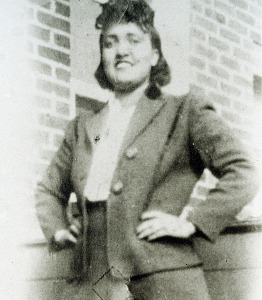
Henrietta Lacks was an African American woman who died in 1951 from cervical cancer. Her cells, on the other hand, are still alive and continue to grow. Scientists are using her cells made huge medical discoveries decades after her death and their existence has made modern medicine as we know it today.
Henrietta Lacks was born as Loretta Pleasant on August 1st, 1920 in Roanoke, Virginia; it is unclear when she changed her name to Henrietta. At the age of four, her mother died and she was sent to live with her grandfather and first cousin, David “Day”, in an old slave house. When Lacks was 14, she and Day had their first child named Lawrence. The couple had a second child named Elsie when Lacks was 19; later marrying in 1941. The newlyweds moved from Roanoke to Baltimore, Maryland and had three more children named David Jr., Deborah and Joseph.
In 1951, Lacks started having abnormal pain and abdominal bleeding. She went to Johns Hopkins Hospital because they were the only hospital that treated African-Americans. On January 29th, she was diagnosed with cervical cancer. She had many radiation treatments that involved sewing Radium into the infected area. She had to take a 30-minute bus ride to get to her appointments. Near the end of her life, she was admitted into the hospital because the bus rides became too physically exhausting. Her skin was turning black from radiation treatments and her kids were not allowed to visit her because even minimal movement caused her too much pain. Before Henrietta died at the age of 31 on October 4th, 1951, 2 cell samples were removed from her tumor.
The samples of the cells that were taken from Lacks survived after she died. They were originally removed without her consent by Dr. George Gey. He sent the cells to his lab and didn’t expect them to survive very long but they kept growing. He discovered the first immortal cell line which he named HeLa, taking the first two letters from Lack’s first and last name. He sold the cells to his fellow doctors and soon the cells were used for research everywhere. For instance, Lacks’ cells have helped scientists develop the HPV vaccine and are currently helping scientists find a cure for HIV/AIDS due to a strain of HPV-18 that Lacks had. Vials of HeLa cells are currently being sold by cell banks and bio tech companies for $260. However, none of the profits have gone to the Lacks family.
Henrietta Lacks had a short life, yet discoveries using her cells have helped many people, including the development of chemotherapy, the polio vaccine, the HPV vaccine, among many others.
[Sources:
biography.com
;
New York Times; The Guardian; The Immortal Life of Henrietta Lacks
]

